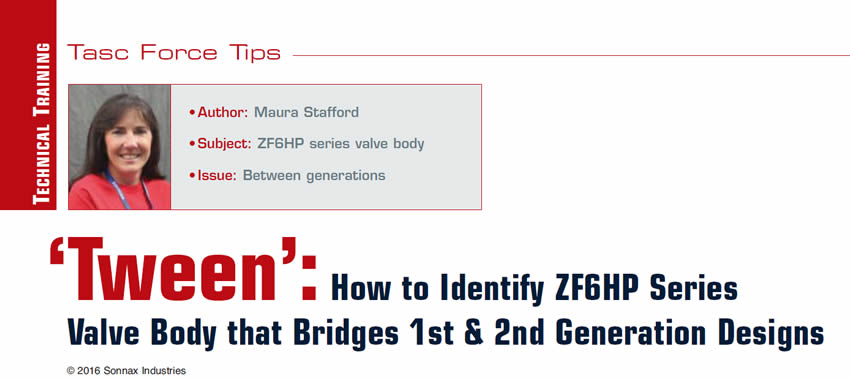
TASC Force Tips
- Author: Maura Stafford
- Subject: ZF6HP series valve body
- Issue: Between generations
Take a ride on the memory train back to middle school. For many, this arouses feelings of a socially awkward time due to things like orthodontic braces and physical changes driven by hormones and runaway metabolism. Left behind were the childish days of elementary school, yet the yellow bus ride in the morning and afternoon signified that you hadn’t yet reached those glorious teenage years, high school and wheels of your own. By today’s popular definition, you were a “tween.”
The ZF6HP series valve body with an 053 separator plate code could be labeled as a tween as well. It has similarities to the early Generation 1 ZF6HP19/26/32 valve bodies, but also some significant differences that could cause rebuild problems if not noticed. And while this 053 plate version also has features seen on the updated Generation 2 ZF6HP21/28/34 transmission units that are equipped with higher torque capacity, improved acceleration, quicker shift timing, etc., it did not skip a grade and make that leap, as it still has the basic functionality of a GEN 1.
Since this awkward valve body is stuck in the middle, not fitting the mold of either an early or late OE design, extreme care should be taken when attempting any repairs. Existing fixes are readily available for it and easy to install, providing a significant cost savings over an OE remanufactured valve body. However, the location of particular valves and some of the valve designs themselves are different from GEN 1 and GEN 2, so verify proper location and interchangeability of any products before altering the core in any permanent way.
Early identification of the tween ZF6HP valve body is critical for a successful rebuild. This particular valve body is most commonly seen in the beautiful and pricey 7-series BMWs. Identification of a valve body core is easiest by referencing the codes and number stamped on the separator plate, which will be A053, B053 and 1068-327-189 (Figure 1).
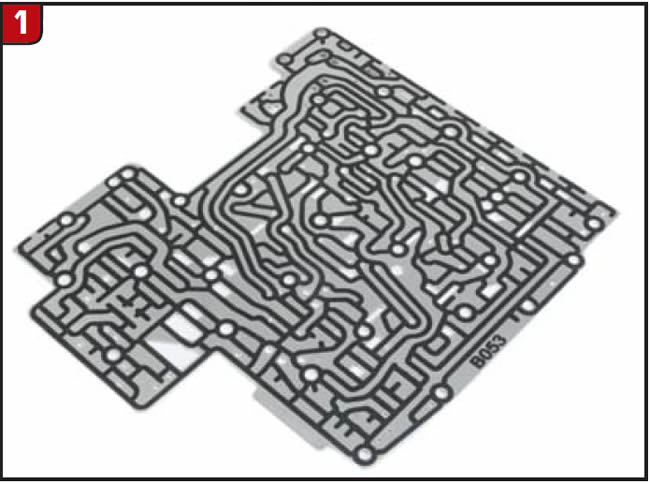
Another quick identification method is by measuring the OE pressure regulator sleeve, as it is different from both the GEN 1 and GEN 2 designs (Figure 2).


To further aid in distinguishing the differences between GEN 1, GEN 2 and the tween GEN 1 valve bodies with 053 separator plate codes, Figures 3 to 8 show exploded views of each. These provide detailed views of valve design and location so that differences and similarities across valve body types can be seen.
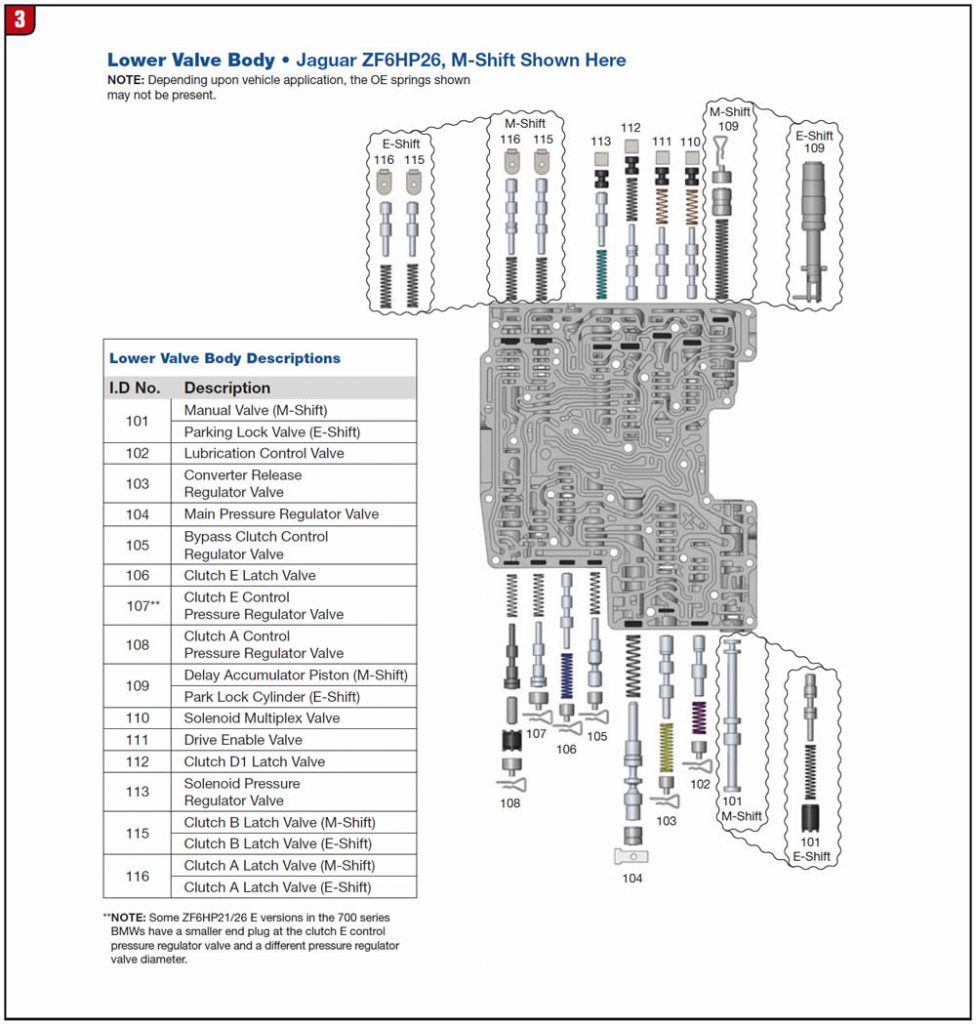
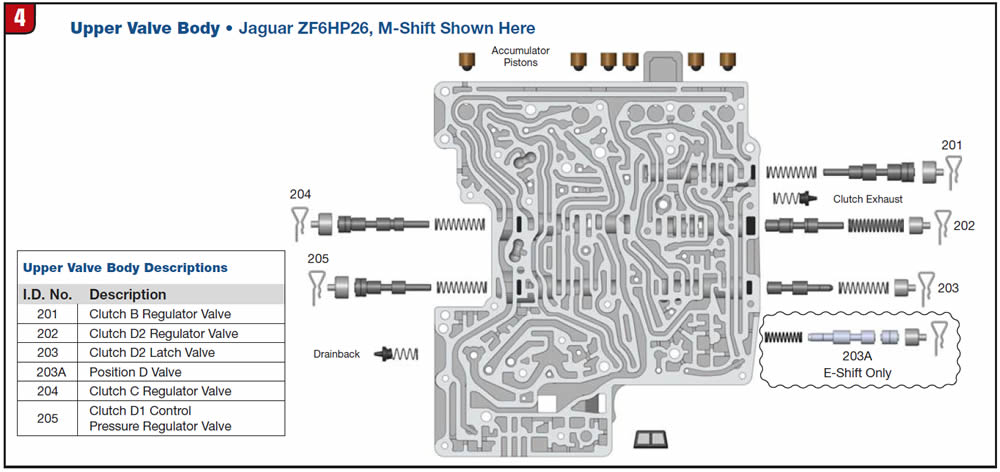
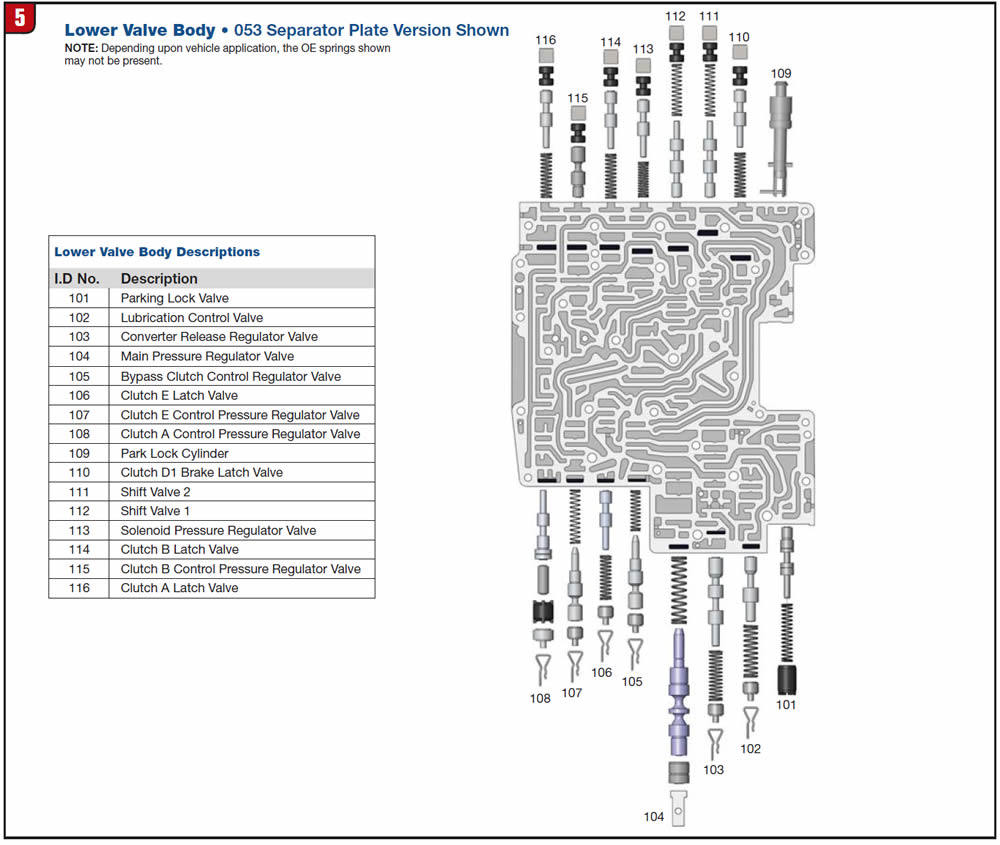
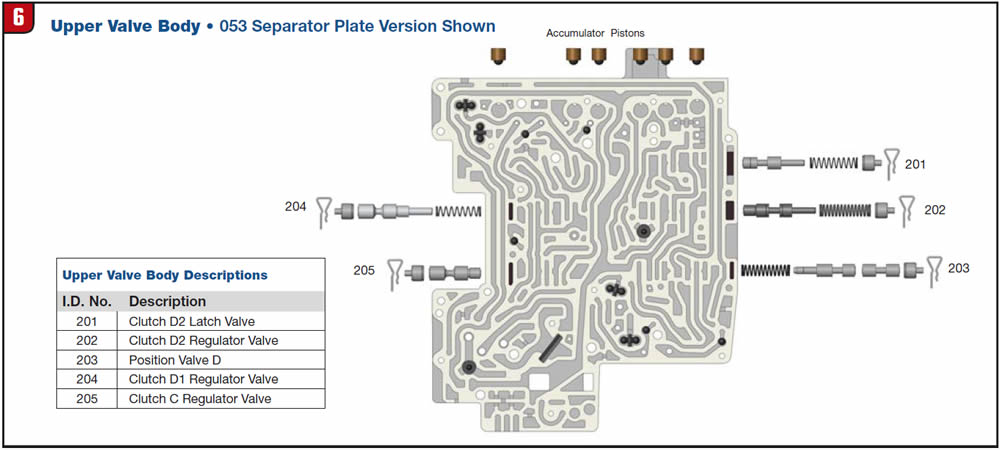
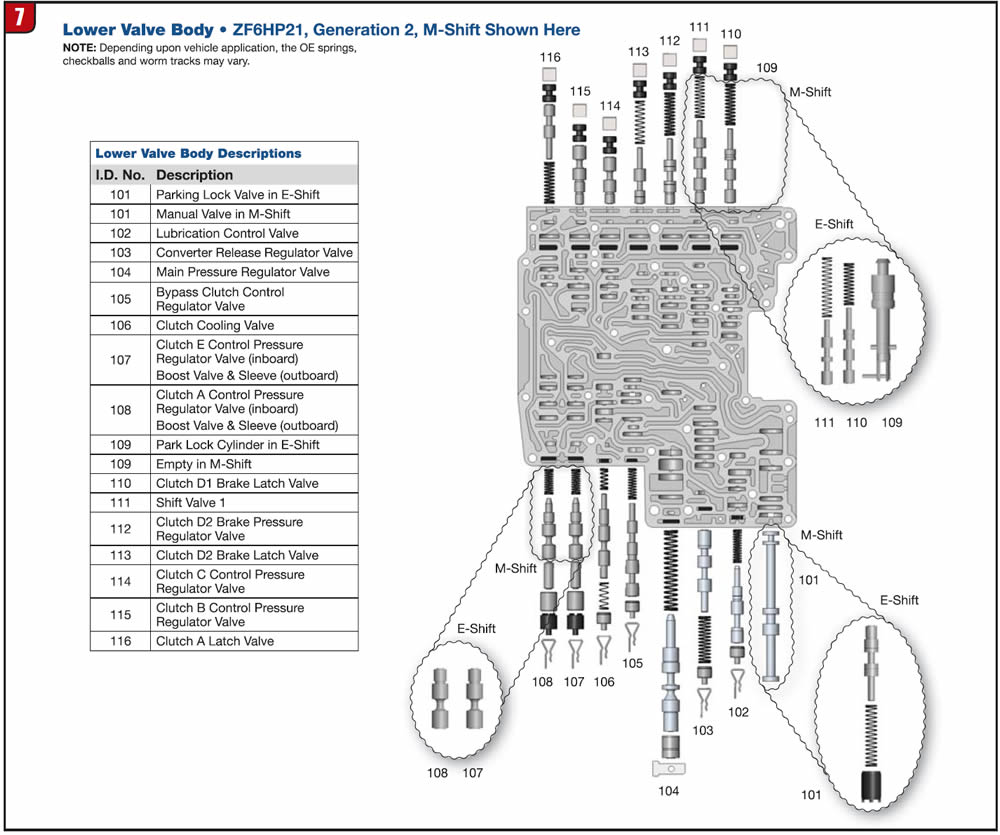
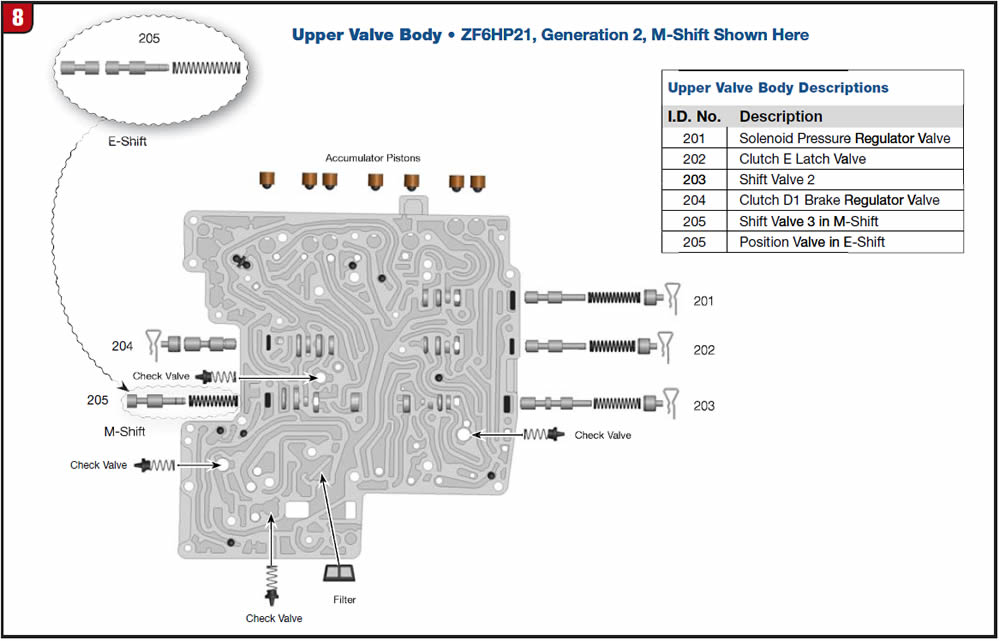

The comprehensive chart in Figure 9 indicates the bore location in the various valve body types for ease in locating particular valves.
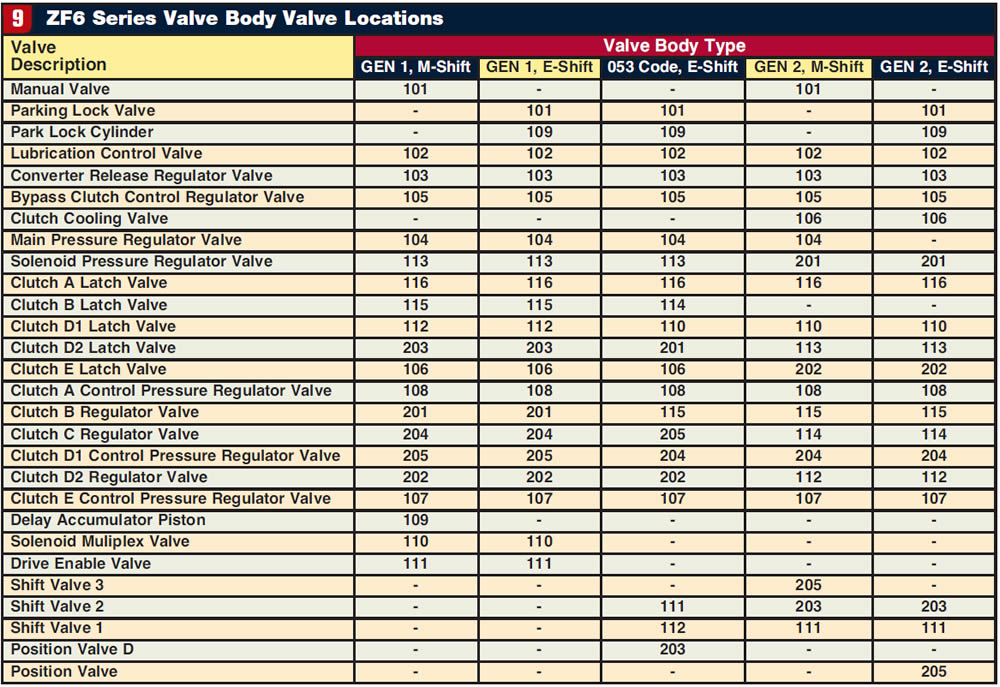
When my daughter was struggling with the awkwardness of her middle school years, I gave her a bracelet with a hidden message (Figure 10). This ZF6HP tween valve body can be an easy rebuild and money in the bank if you keep that same thing in mind and pay close attention to the details of what’s on the inside.
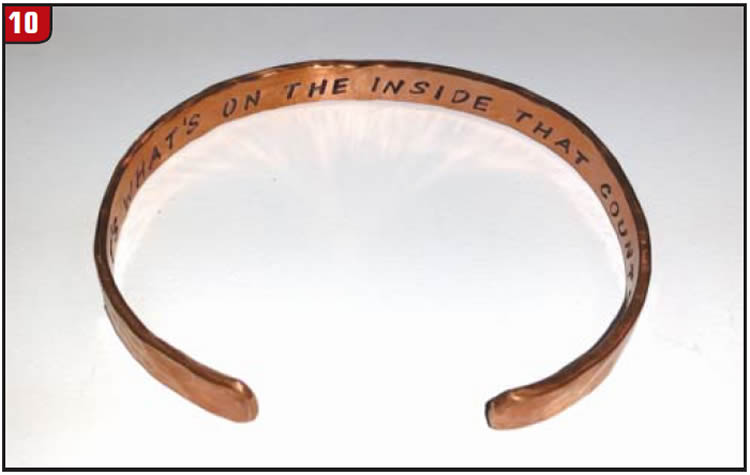

Maura Stafford is a Sonnax product development manager for transmission components and remanufactured valve bodies. She is a member of the Sonnax TASC Force (Technical Automotive Specialties Committee), a group of recognized industry technical specialists, transmission rebuilders and Sonnax Industries Inc. technicians.













